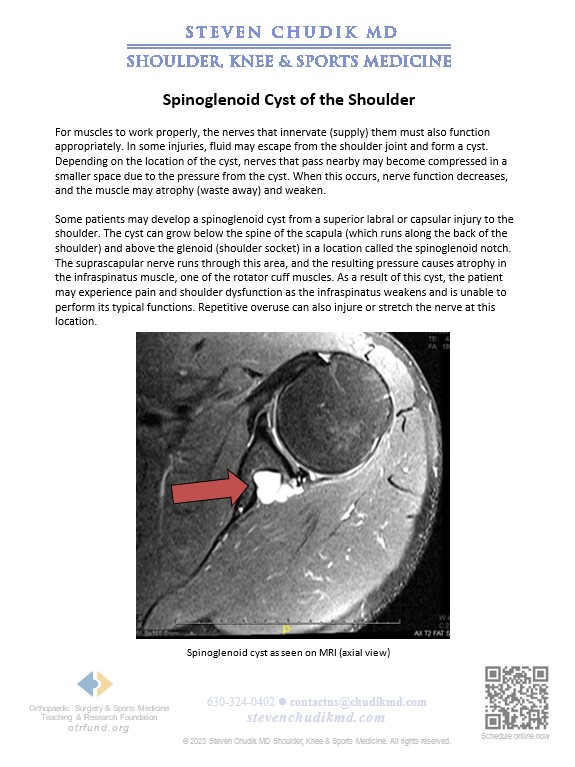 Little League® guidelines may not be strict enough to prevent injuries
Little League® guidelines may not be strict enough to prevent injuries
Home / Shoulder / Shoulder Injuries and Conditions / Nerve disorders / Spinoglenoid Cyst
In order for muscles to work properly, the nerves that innervate (supply) them must also function appropriately. In some injuries, fluid may escape from the shoulder joint and form a cyst. Depending on the location of the cyst, nerves that pass nearby may become compressed in a smaller space due to the pressure from the cyst. When this occurs, nerve function decreases and the muscle may atrophy (waste away) and weaken.
Some patients may develop a spinoglenoid cyst from a superior labral or capsular injury to the shoulder. The cyst can grow below the spine of the scapula (which runs along the back of the shoulder) and above the glenoid (shoulder socket) in a location called the spinoglenoid notch. The suprascapular nerve runs through this area, and the resulting pressure causes atrophy in the infraspinatus muscle, which is one of the rotator cuff muscles. As a result of this cyst, the patient may experience pain and shoulder dysfunction as the infraspinatus weakens and is unable to perform its typical functions.
Learn More

Content provided by Dr. Chudik not to be used for diagnosis and treatment. You can receive a proper evaluation and diagnosis by making an appointment with Dr. Chudik
 “Thank you Dr. Chudik for helping me get back on the field for my senior year.”
“Thank you Dr. Chudik for helping me get back on the field for my senior year.”
Dr Steven Chudik founded OTRF in 2007 to keep people active and healthy through unbiased education and research. Click to learn about OTRF’s free programs, educational opportunities and ways to participate with the nonprofit foundation.
1010 Executive Ct, Suite 250
Westmont, Illinois 60559
Phone: 630-324-0402
Fax: 630-920-2382
(New Patients)
550 W Ogden Ave
Hinsdale, IL 60521
Phone: 630-323-6116
Fax: 630-920-2382
4700 Gilbert Ave, Suite 51
Western Springs, Illinois 60558
Phone: 630-324-0402
Fax: 630-920-2382

© 2025 © 2019 Copyright Steven Chudik MD, All Rights Reserved.
